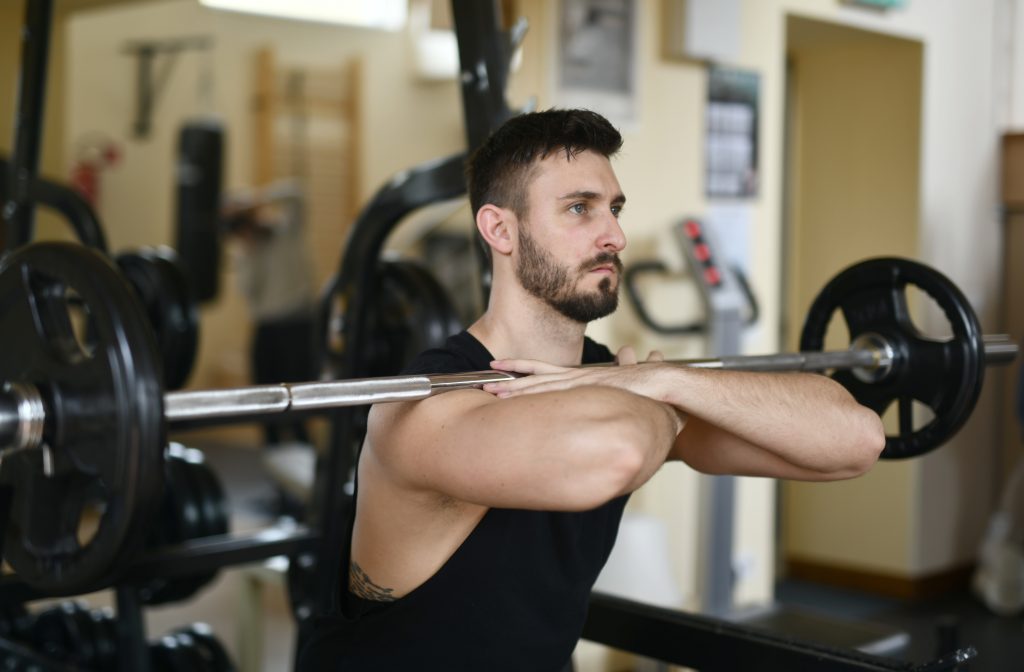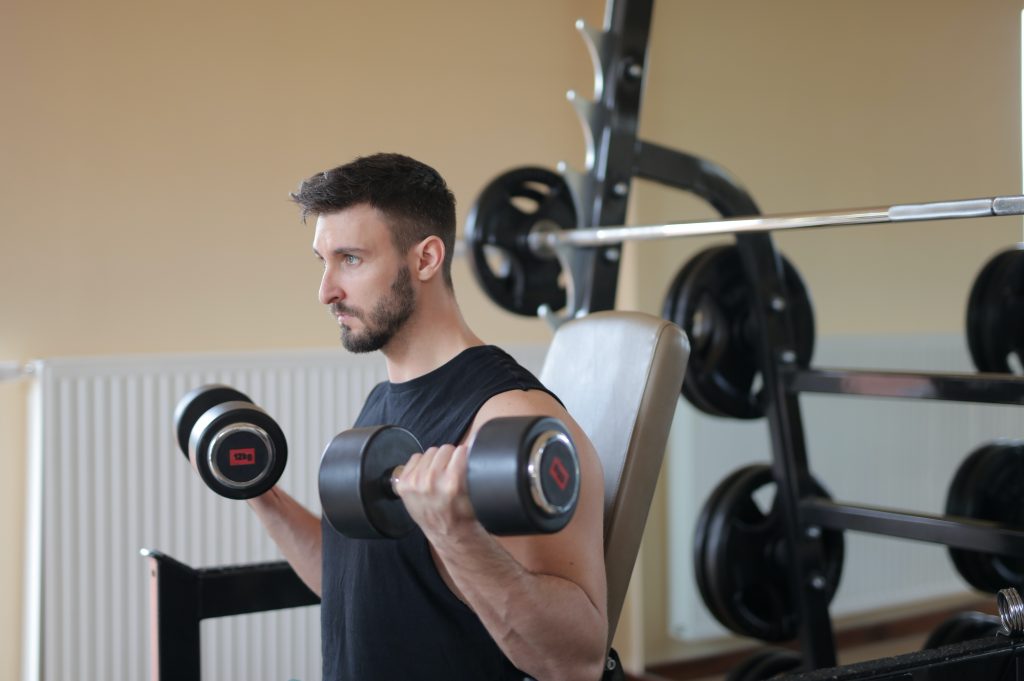Discover the relationship between exercise and testosterone levels in this informative article.
Does Exercise Impact Testosterone Levels?

Testosterone is a hormone that plays a crucial role in the human body. From regulating muscle mass to influencing sex drive, this mighty hormone does it all. But does exercise have anything to do with testosterone levels? Can hitting the gym or going for a run really affect this hormone? Let’s dive into the exciting world of testosterone and find out!
Understanding Testosterone and Its Functions
First things first, what exactly is testosterone? Well, my friend, testosterone is a hormone produced primarily in the testicles in men and the ovaries in women. While it is often associated with men, testosterone is also important for women’s health.
What is Testosterone?
Testosterone is a steroid hormone that belongs to a class called androgens. It plays a crucial role in the development of reproductive tissues and secondary sexual characteristics, such as muscle growth, bone density, and hair growth. In simpler terms, testosterone is the hormone responsible for making boys into men and girls into women.
The Role of Testosterone in the Body
Now, let’s talk about why testosterone is so important. In men, testosterone contributes to the development of the male reproductive system, including the testes and prostate. It also plays a vital role in the production of sperm and the regulation of libido.
But that’s not all! Testosterone also helps in building muscle mass and maintaining bone density. It influences fat distribution, red blood cell production, and even contributes to a sense of well-being. In women, although produced in smaller quantities, testosterone also plays a role in energy levels, maintaining bone density, and regulating sex drive.
Let’s dive deeper into the fascinating world of testosterone. Did you know that testosterone levels tend to be highest in men during adolescence and early adulthood? This surge in testosterone during puberty is responsible for the physical changes that occur, such as the deepening of the voice, growth of facial and body hair, and the development of muscles.
As men age, testosterone levels gradually decline. This decline, known as andropause, usually begins around the age of 30 and continues throughout life. However, the rate at which testosterone declines can vary from person to person. Some men may experience symptoms such as fatigue, reduced muscle mass, and decreased libido as a result of low testosterone levels.
On the other hand, women also experience changes in testosterone levels throughout their lives. During puberty, testosterone contributes to the growth of pubic and underarm hair, as well as the development of breasts. In women, testosterone is primarily produced in the ovaries and adrenal glands. It plays a role in maintaining bone density, regulating sex drive, and promoting overall well-being.
It’s important to note that testosterone levels can be influenced by various factors, including lifestyle, diet, exercise, and overall health. For example, engaging in regular physical activity and maintaining a healthy weight can help optimize testosterone levels. On the other hand, certain medical conditions, such as hypogonadism, can lead to low testosterone levels and may require medical intervention.
So, whether you’re a man or a woman, testosterone plays a crucial role in your overall health and well-being. From the development of reproductive tissues to the regulation of libido and muscle growth, this hormone is truly remarkable. Understanding the functions of testosterone can help us appreciate its importance and take steps to maintain optimal levels for a healthy and fulfilling life.
The Relationship Between Exercise and Hormones
Now that we have a basic understanding of testosterone, let’s explore the intriguing link between exercise and hormones. Exercise, as we all know, is fantastic for overall health, but it turns out that it can also impact our hormone levels.
When we exercise, our bodies experience various physiological changes. These changes, in turn, stimulate the production and release of hormones, including testosterone. Physical activity, my friend, has the power to give your hormone levels a little boost!
But how exactly does exercise affect testosterone levels? Well, the answer lies in the type and intensity of exercise.
Research has shown that both aerobic exercise and resistance training can have a positive impact on testosterone levels. Aerobic exercises, such as running, swimming, or cycling, increase the body’s oxygen consumption and stimulate the release of endorphins. These endorphins, also known as “feel-good” hormones, can indirectly influence testosterone production.
On the other hand, resistance training, which includes activities like weightlifting or bodyweight exercises, directly affects testosterone levels. When we engage in resistance training, our muscles experience micro-tears, which then signal the body to repair and rebuild the muscle tissue. This repair process requires the production of testosterone, leading to an increase in its levels.
Interestingly, the intensity of exercise also plays a role in its impact on testosterone. High-intensity interval training (HIIT), for example, has been found to have a greater effect on testosterone levels compared to steady-state cardio exercises. HIIT involves short bursts of intense exercise followed by periods of rest or lower intensity. This type of training puts a significant demand on the body, triggering a greater release of testosterone.
Furthermore, the duration and frequency of exercise can also influence testosterone levels. Studies have shown that consistent, regular exercise over a prolonged period can lead to a sustained increase in testosterone levels. So, if you’re looking to optimize your hormone balance, it’s important to make exercise a regular part of your routine.
It’s worth noting that while exercise can positively impact testosterone levels, it’s not the only factor at play. Other lifestyle factors, such as sleep, stress levels, and nutrition, also contribute to hormone regulation. Therefore, it’s essential to adopt a holistic approach to maintain optimal hormone balance.
In conclusion, exercise has a significant influence on hormone levels, particularly testosterone. Both aerobic exercise and resistance training can contribute to an increase in testosterone production. The intensity, duration, and frequency of exercise all play a role in determining the extent of this impact. So, if you’re looking to boost your hormone levels naturally, lace up those sneakers and get moving!
Different Types of Exercise and Their Effects on Testosterone
Aerobic Exercises and Testosterone Levels
Aerobic exercises, such as running, swimming, or cycling, have a positive impact on testosterone levels. These activities get your heart pumping and oxygen flowing throughout your body. Studies have shown that engaging in aerobic exercises can increase testosterone levels, especially in overweight and sedentary individuals.
Let’s dive deeper into the effects of aerobic exercises on testosterone levels. When you engage in aerobic activities, your body releases endorphins, which are known as the “feel-good” hormones. These endorphins not only boost your mood but also stimulate the production of testosterone.
Furthermore, aerobic exercises help to reduce body fat, particularly in the abdominal area. Excess body fat, especially around the midsection, can lead to lower testosterone levels. By shedding those extra pounds through aerobic exercises, you can enhance your testosterone production and improve your overall health.
Additionally, aerobic exercises improve cardiovascular health, which plays a crucial role in testosterone production. A healthy heart ensures efficient blood circulation, delivering oxygen and nutrients to the muscles and organs. This optimal blood flow helps support testosterone synthesis and release.
Strength Training and Testosterone Levels
When it comes to strength training, things get even more exciting. Lifting weights or performing resistance exercises has a significant impact on testosterone levels. Research suggests that resistance training can lead to a substantial increase in testosterone production, particularly when utilizing heavy loads and compound exercises.
Strength training involves challenging your muscles by lifting progressively heavier weights or increasing resistance. This type of exercise stimulates the release of testosterone, promoting muscle growth and strength development.
Compound exercises, such as squats, deadlifts, and bench presses, are particularly effective in boosting testosterone levels. These exercises engage multiple muscle groups simultaneously, creating a greater demand for testosterone production. As a result, your body responds by releasing more testosterone, leading to enhanced muscle growth and improved overall strength.
Furthermore, strength training helps to increase bone density, which is essential for maintaining healthy testosterone levels. As you lift weights, your bones experience mechanical stress, triggering the release of growth factors that promote bone remodeling. This remodeling process strengthens your bones and supports testosterone production.
So, if you’re looking to improve your testosterone levels, grab those dumbbells and start lifting! Incorporating both aerobic exercises and strength training into your fitness routine can have a synergistic effect, maximizing your testosterone production and overall health.
The Impact of Exercise Intensity on Testosterone Levels
Low-Intensity Exercise and Testosterone
Now, what about low-intensity exercises like yoga or leisurely walks? While these activities undoubtedly have their own benefits, they might not have a substantial impact on testosterone levels. Low-intensity exercises are excellent for overall well-being and stress reduction, but to get those testosterone levels climbing, you might want to step up the intensity!
High-Intensity Exercise and Testosterone
If you’re up for a challenge, high-intensity exercise might be your calling. High-intensity interval training (HIIT) and other forms of intense workouts have been shown to increase testosterone levels significantly. These workouts push your body to its limits, leading to an increase in hormone production and release.
So, if you’re craving a testosterone surge, get ready to break a sweat and give high-intensity workouts a shot!
The Role of Age and Fitness Level in Exercise-Induced Testosterone Changes

Testosterone Levels and Exercise in Different Age Groups
Now, let’s talk about age and fitness level, which can influence the impact of exercise on testosterone. As we age, our testosterone levels naturally decline. However, research suggests that regular exercise can help maintain more optimal testosterone levels, regardless of age.
It’s important to note that the effects of exercise on testosterone levels may vary depending on individual factors, such as underlying health conditions or medications.
Fitness Level and Its Impact on Testosterone
If you’re someone who regularly engages in physical activity and maintains a high level of fitness, your testosterone levels might be more responsive to exercise. Fit individuals tend to have healthier hormone levels overall.
So, whether you’re young or young at heart, exercising regularly can help keep your testosterone levels in a healthier range!
Conclusion
All in all, the answer to the question, “Does exercise impact testosterone levels?” is a resounding YES! Exercise, particularly aerobic exercises and strength training, has been shown to increase testosterone production and release. The intensity of your workouts also plays a role, with high-intensity exercises leading to a more significant hormonal boost.
However, it’s essential to keep in mind that individual factors, such as age and fitness level, can influence the extent of these changes. Regular exercise can help maintain more optimal testosterone levels, but it’s always a good idea to consult with a healthcare professional to understand your specific needs.
So, my friend, lace up those sneakers, hit the gym, and enjoy the wonderful benefits that exercise offers—hello, testosterone boost! It’s time to unleash your inner beast and conquer the world, all while keeping those hormone levels in check.








I’m truly impressed by the keen analysis and excellent ability to convey information. The knowledge you share clearly stands out in every sentence. It’s obvious that you invest a great deal of effort into delving into your topics, and the results is well-appreciated. Thanks for providing such valuable insights. Continue the excellent job! https://www.elevenviral.com